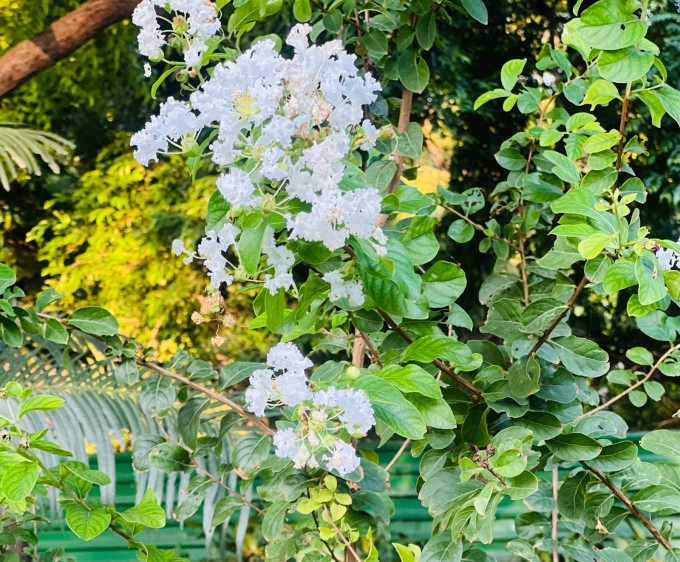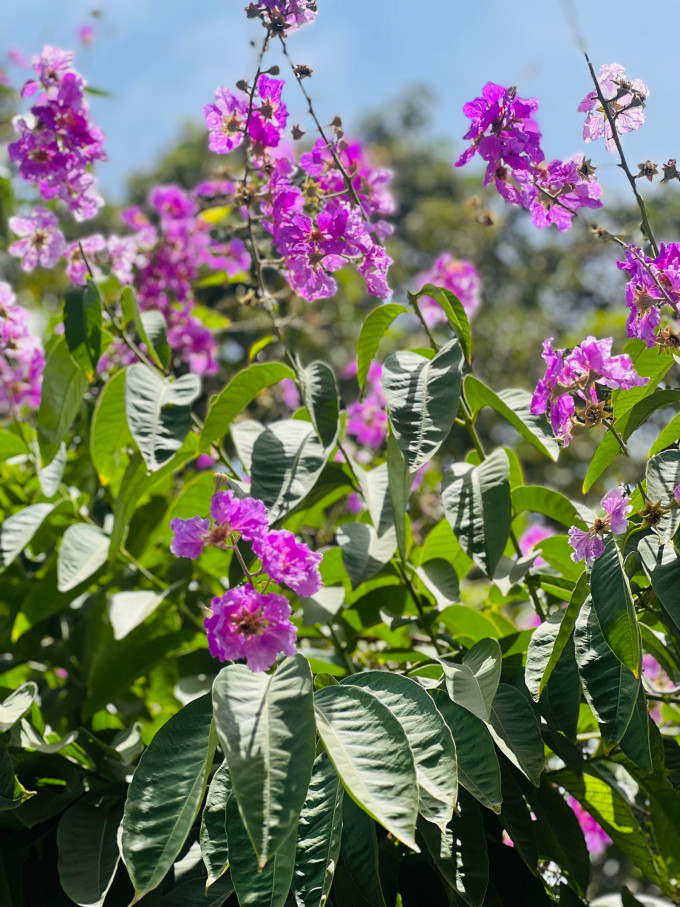Monsoon magic: How jarul blossoms are beautifying Indian cities
Come monsoon, gardens and public spaces across India are adorned with the splendid lilac-coloured blossoms of the jarul, also known as the “Queen’s flower”. Blooming in rich shades of pink, mauve, and purple to the more common white, it is a sight to behold amid the freshly washed greenery. The flower, with its delicate crepe-paper-like petals, is sometimes referred to as the “Pride of India” or “Furush”. In some instances, its crimson-red flowers earn it the name “Rose of India”. Due to the soft, crepe-like texture of its petals, some aficionados also call jarul the “Queen’s Crepe Myrtle”.
There are two varieties of jarul –– smaller shrubs that bloom during the rains and larger trees, with their glorious purple flowers in early summer, lasting until the monsoon. The flowers of the larger jarul trees have six petals, while the smaller shrubs bloom in clusters.

The serene beauty of the Jarul tree’s purple flowers is so cherished that they were commemorated with a stamp by the Indian Postal Department in 1993. Commonly found in Maharashtra, West Bengal, Delhi, the northeastern states, and Southeast Asia, jarul holds special cultural significance.
 Blooming in rich shades of pink, mauve, and purple to the more common white, it is a sight to behold.
Blooming in rich shades of pink, mauve, and purple to the more common white, it is a sight to behold.
In Maharashtra, where it is the state flower, it is known as “Taman” or “Tamahani” in Marathi. The flower is also popularly referred to as “Saavni,” a name that may coincide with the “Shravan” period in North India, denoting greenery, prosperity, and abundance.
The avenues of Delhi’s Mandi House, Lodhi Road, and Chanakyapuri are currently brimming with vibrant purple hues of jarul blossoms. As their mild fragrance fills the environment, one sees butterflies, bees, and birds hovering over them, at the several roundabouts in Delhi’s Akbar Road, flocking from shades of pink, purple, to white.
Beyond their beauty, jarul trees are valued for their quality timber, used in construction and boat making. In the Philippines, where the tree is known as “Banaba,” its leaves and flowers are processed into traditional herbal remedies and teas, owing to the plant’s herbal properties.
 The plant thrives well from summer to monsoon and is said to control soil erosion.
The plant thrives well from summer to monsoon and is said to control soil erosion.
In cities, jarul shrubs are considered popular ornamental plants for streets, public spaces, parks and gardens. Its beautiful flowers, leaves, and fruits make the tree a vital biodiversity magnet, adding to the beauty of cities and landscapes.
The plant thrives well from summer to monsoon and is said to control soil erosion. Green architects, horticulturalists, and urban planners, therefore, promote it as an ornamental/avenue tree. Even though it is said that jarul was originally a forest tree and was later introduced to cities, it is common to find jarul saplings in tree plantation drives.
There is a little bit of jarul for all of us. This monsoon, revel in its splendour!
📣 For more lifestyle news, click here to join our WhatsApp Channel and also follow us on Instagram
Disclaimer: The copyright of this article belongs to the original author. Reposting this article is solely for the purpose of information dissemination and does not constitute any investment advice. If there is any infringement, please contact us immediately. We will make corrections or deletions as necessary. Thank you.

